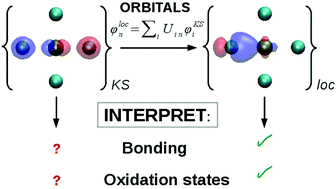The use of localised orbitals for the bonding and mechanistic analysis of organometallic compounds†
Abstract
Through a series of examples we show how, upon orbital localisation, the outcome of an electronic structure calculation reveals features, such as bonding and oxidation states, which are controversial to grasp by alternative methods. The approach can also be applied to the analysis of reaction mechanisms. Because of the insight it provides in a limited execution time, we believe that this approach, known since the early developments of computational quantum chemistry, could find wider applications in the organometallic community than it actually has and facilitate communication between computational and experimental chemists.

- This article is part of the themed collection: Synergy between Experiment and Theory

 Please wait while we load your content...
Please wait while we load your content...